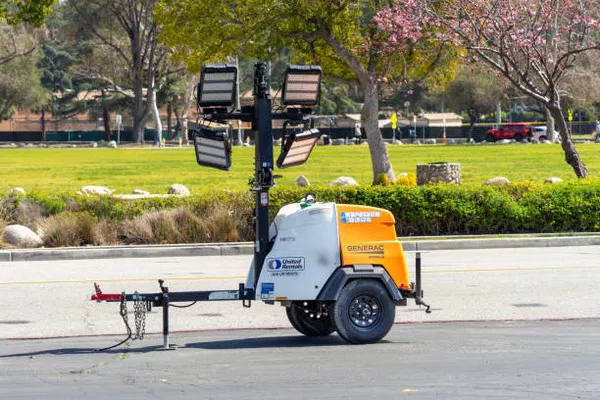When it comes to ensuring your refrigerator stays operational during a power outage, selecting the right size generator is crucial. A refrigerator is an essential appliance, maintaining the freshness and safety of your food. However, not all generators are created equal, and choosing one that adequately meets the power demands of your refrigerator can be a daunting task. This article delves into the various considerations involved in selecting the appropriate generator size for powering a refrigerator, ensuring you make an informed decision.
Understanding Power Requirements
The first step in determining the right size generator is understanding the power requirements of your refrigerator. This involves two key aspects: starting wattage and running wattage.
Starting Wattage: Refrigerators typically require a higher amount of power to start due to the initial surge needed to kick-start the compressor. This starting wattage can be two to three times higher than the running wattage.
Running Wattage: This is the continuous power the refrigerator needs to operate once it has started. It is generally lower than the starting wattage.
To find these wattages, check the refrigerator’s nameplate, which is usually located inside the door or at the back of the unit. If the wattage is not listed, you can calculate it by multiplying the voltage (typically 120V for household appliances in the U.S.) by the amperage (also listed on the nameplate).
Average Power Requirements for Refrigerators
Most modern refrigerators, depending on their size and efficiency, have the following power requirements:
Small Refrigerators (Mini Fridges): These units typically require around 90 to 200 watts for running and about 500 to 700 watts for starting.
Standard Refrigerators: Standard household refrigerators generally need 100 to 800 watts for running and 800 to 1,200 watts for starting.
Large Refrigerators: Larger models, including those with multiple compartments and features like ice makers and water dispensers, can require 1,000 to 2,000 watts for starting and 150 to 1,200 watts for running.
Calculating Total Power Requirements
When choosing a generator, you must account for both the starting and running wattages. The generator needs to handle the initial surge of power to start the refrigerator and then provide sufficient power to keep it running.
For example, if your refrigerator requires 800 watts to run and 1,600 watts to start, you need a generator that can handle at least 1,600 watts.
Additional Considerations
Efficiency and Energy Star Ratings: Refrigerators with Energy Star ratings are more efficient and may have lower power requirements. Investing in an energy-efficient refrigerator can reduce the size of the generator needed.
Ambient Temperature: Refrigerators work harder in higher temperatures, potentially increasing their power requirements. Consider the climate and typical temperatures in your area when choosing a generator.
Generator Capacity: Generators are rated by their maximum and continuous power outputs. Ensure the generator can handle the peak (starting) wattage as well as the continuous (running) wattage of your refrigerator.
Other Appliances: If you plan to power additional appliances along with your refrigerator, you need to sum their power requirements and choose a generator that can handle the total load.
Types of Generators
There are various types of generators to consider:
Portable Generators: These are versatile and can be used for various applications. They range from small, portable units suitable for camping to larger models that can power multiple household appliances. Portable generators usually run on gasoline or propane.
Inverter Generators: These are a type of portable generator that provides cleaner power, making them ideal for sensitive electronics. They are more fuel-efficient and quieter than traditional portable generators.
Standby Generators: These are permanently installed and automatically kick in during a power outage. They are typically more powerful and can support larger loads, including whole-house power.
Choosing the Right Generator Size
To choose the right generator size, follow these steps:
List All Appliances: Make a list of all the appliances you want to power with the generator. Note their starting and running wattages.
Calculate Total Wattage: Sum the starting wattages of all appliances to find the peak load. Do the same for running wattages to find the continuous load.
Select Generator Capacity: Choose a generator that can handle the peak load and provide continuous power for the running load. It’s advisable to select a generator with a slightly higher capacity to ensure it can handle unexpected surges.
Example Calculation
Suppose you have the following appliances:
Refrigerator: 800 watts running, 1,600 watts starting
Microwave: 1,200 watts running and starting
Lights: 300 watts running and starting
Total starting wattage = 1,600 (fridge) + 1,200 (microwave) + 300 (lights) = 3,100 watts Total running wattage = 800 (fridge) + 1,200 (microwave) + 300 (lights) = 2,300 watts
In this case, you need a generator with at least 3,100 watts peak capacity and 2,300 watts running capacity. A generator rated at 3,500 watts peak and 2,500 watts running would provide a safe margin.
Practical Tips
Regular Maintenance: Keep your generator in good working condition with regular maintenance. Check the oil, fuel, and air filters according to the manufacturer’s recommendations.
Test Runs: Periodically test your generator to ensure it works properly and is capable of powering your refrigerator and other essential appliances.
Fuel Storage: Ensure you have an adequate supply of fuel. For gasoline generators, stabilize the fuel if it’s going to be stored for a long time. Propane generators require propane tanks, which should be filled and checked regularly.
See Also A GUIDE TO HOOKING UP A GENERATOR TO POWER YOUR HOME
Conclusion
Choosing the right size generator to power your refrigerator involves understanding its power requirements and selecting a generator that can handle both the starting and running wattages. Consider additional factors such as efficiency, ambient temperature, and the total load if powering multiple appliances. By following these guidelines, you can ensure that your refrigerator remains operational during power outages, keeping your food safe and fresh. With the right preparation and maintenance, your generator will be a reliable source of power in emergencies.

